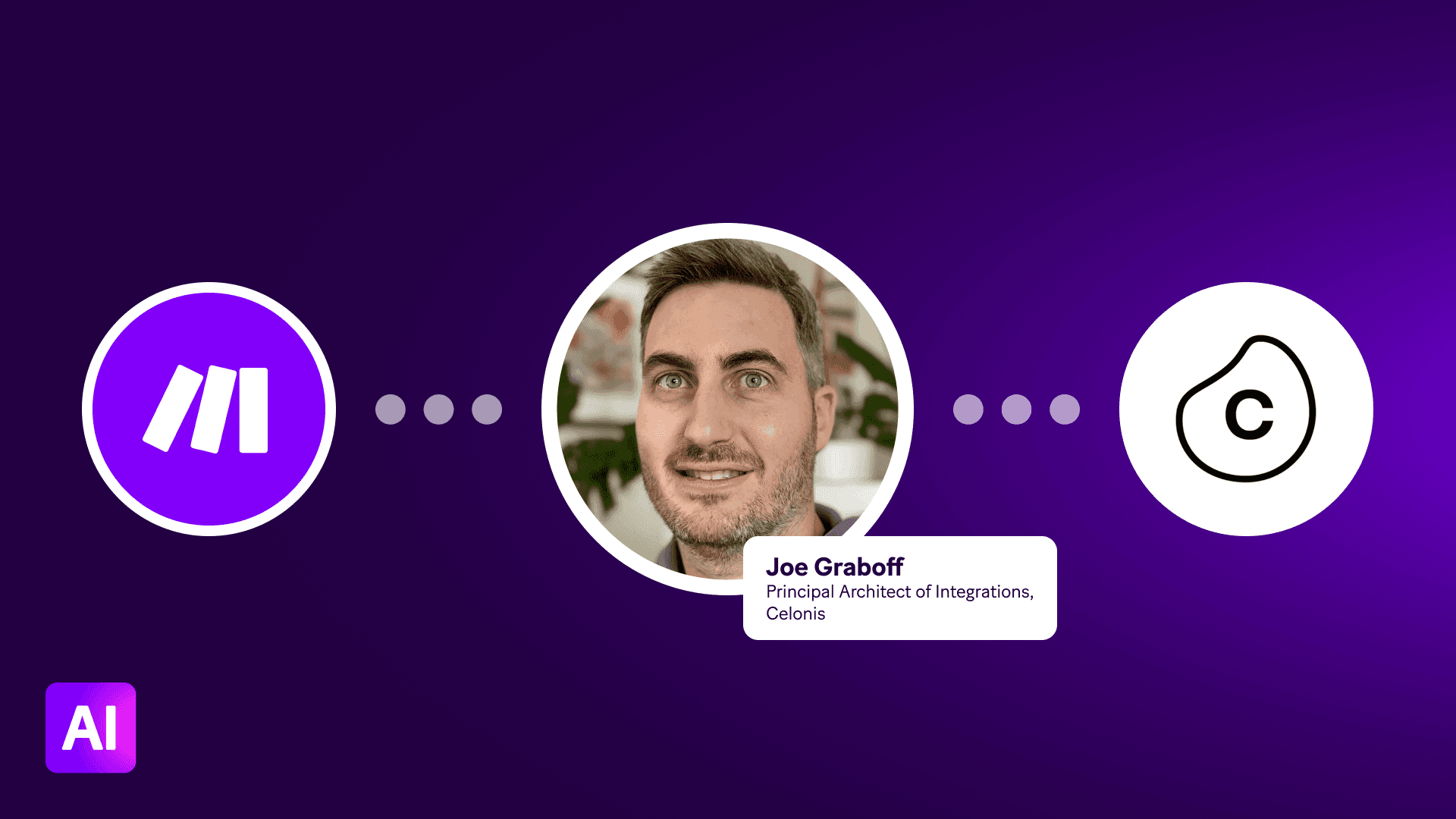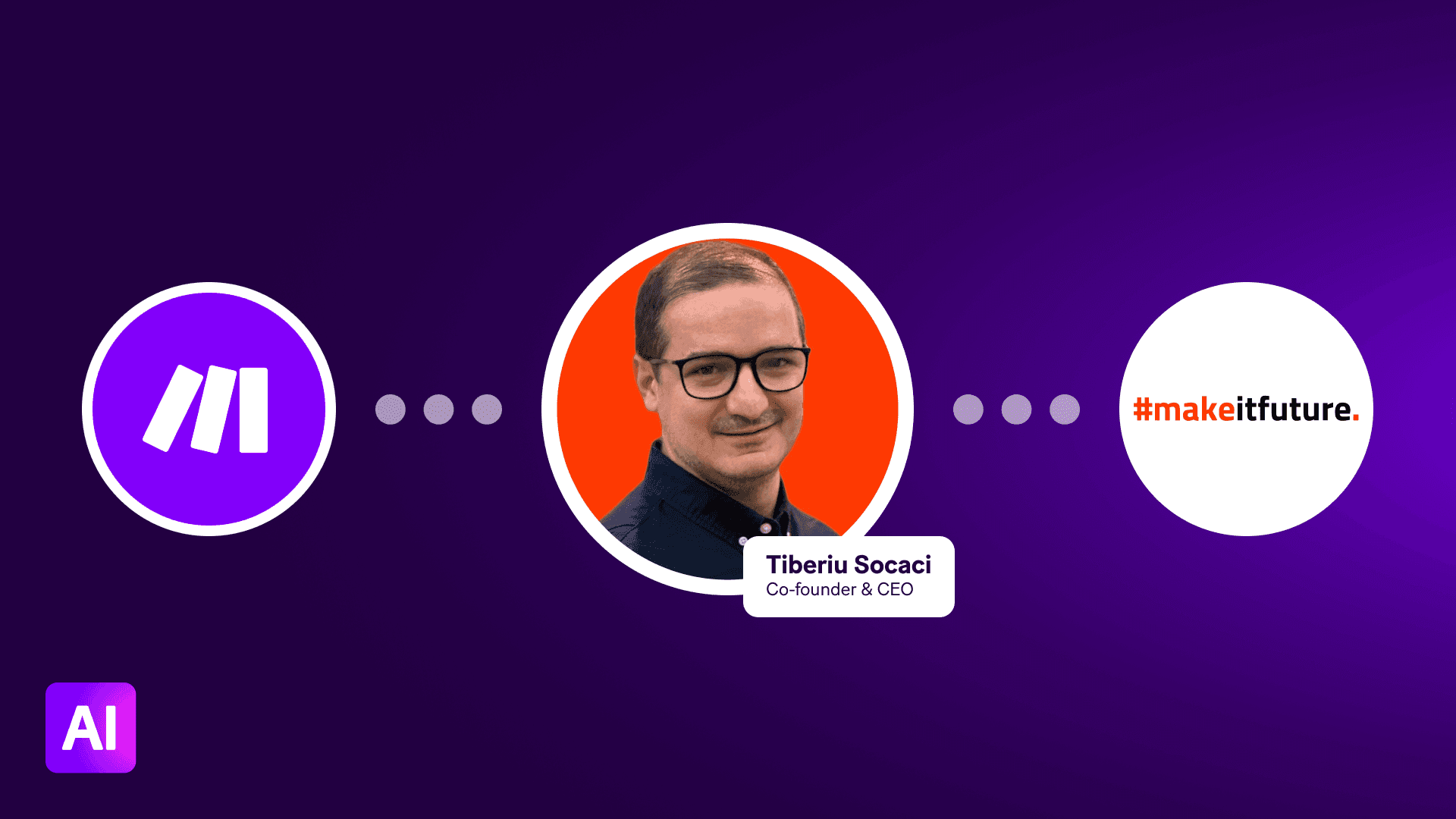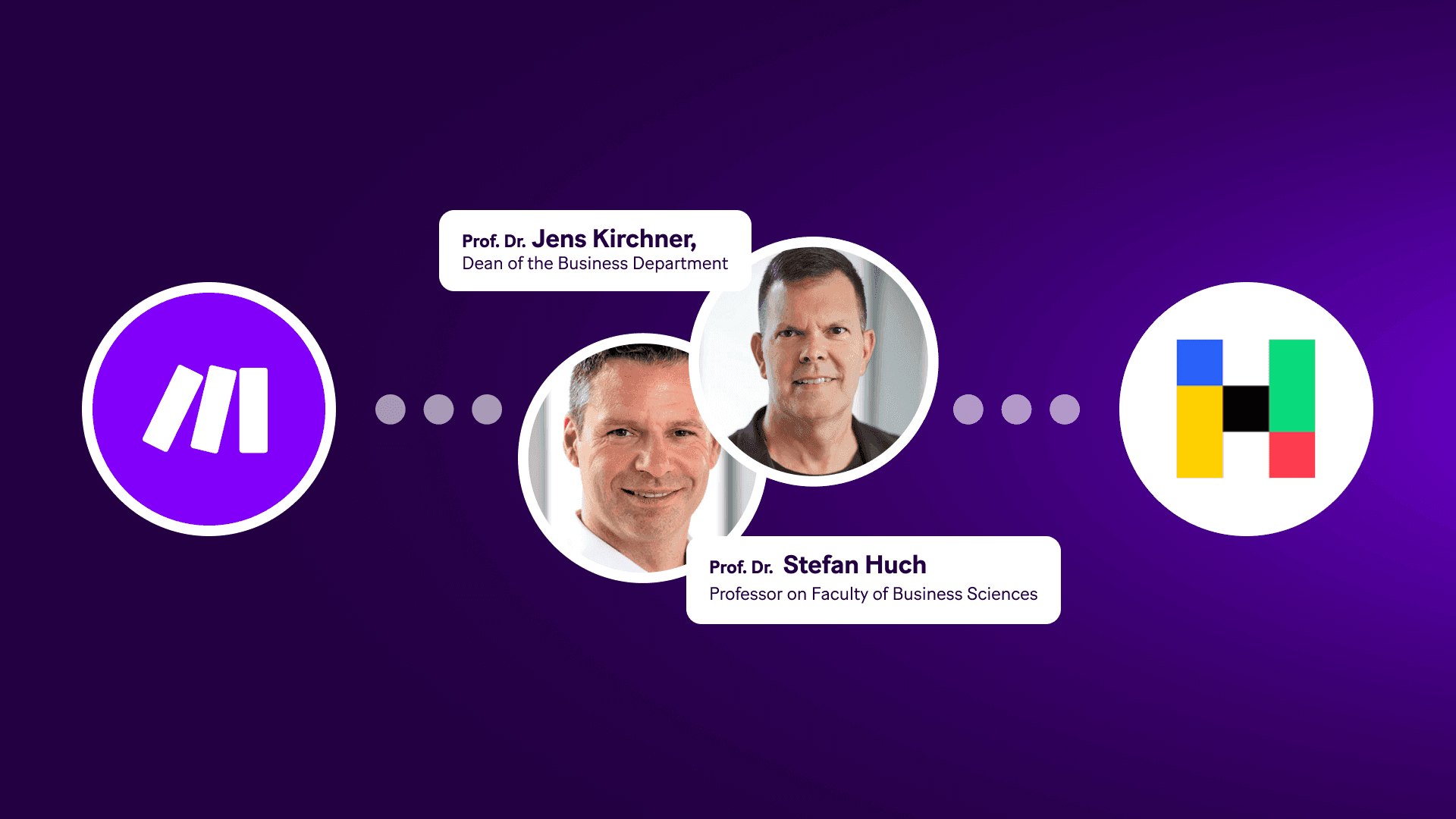Jul 16, 2025 | 5 minutes
Celonis builds business system integrations 5× faster with Make
Read how Make helped Celonis improve invoicing, cut integration setup time by 80%, create 10+ custom apps, and experiment with AI.

Industry: IT – Data Analytics
Use case: Integrating a legacy tech stack
Country: Germany / US
Company size: 1,000-5000 employees
Apps used: Workday Financial Management, Brightflag, Anaplan, Salesforce, Swoogo, Oanda Exchange Rates, Avalara AvaTax, OpenAI (ChatGPT, Whisper, DALL-E), Google Gemini AI, Google Vertex AI (Gemini), Greenhouse Recruiting, Zuora, Microsoft SharePoint, Stripe, Gmail, Slack, ServiceNow
Celonis is a global leader in process mining and execution management, helping some of the world’s largest companies uncover inefficiencies and boost performance. Valued at $13B, it’s trusted by industry giants like Uber, Siemens, and Mars, and continues to grow rapidly year over year.
Their G&A (General & Administrative) Systems team, responsible for managing internal software across finance, HR, and planning, plays a key role in keeping operations running smoothly. Yet, before Make, building integrations between these systems was slow and resource-intensive. Each new request required custom code or complex tooling, which often delayed delivery and tied up senior engineers with repetitive tasks.
Joe Graboff, Principal Architect of Integrations at Celonis, shared how they used Make to launch an invoicing flow between Brightflag and Workday, build a reusable custom apps catalog, embrace AI, and create automation templates for faster systems integration.
Make changed everything for us. We went from slow, high-effort integrations to a touchless workflow. Faster, more secure, and easier to maintain. It even changed the course of my career, from auditing spreadsheets to designing automation.
The challenges
Before implementing Make, the Celonis team was facing three main bottlenecks:
Manual, error-prone invoice handling
Before Make, legal invoices arrived in Brightflag (legal invoicing tool) but had to be manually added into Workday by the Accounts Payable team. They had to download each PDF, copy its data, and re-attach the document. This routine tied up specialists for hours and slowed payments. It was also prone to errors.
Slow tech stack integration
Celonis’ G&A Systems team manages many tools, like Workday as an ERP (Enterprise Resource Planning) and HCM (Human Capital Management) system, Greenhouse Recruiting for hiring, and Stripe for credit cards processing. Whenever someone needed data to flow between these systems, engineers had to build custom solutions, which took time and slowed down projects.
Missing integrations and limited AI access
Many of the tools Celonis has been using, like Brightlight, Swoogo for event management, Zuora for customer invoicing, and Avalara AvaTax for tax compliance, weren’t available in the Make app store back then. At the same time, AI capabilities were rapidly evolving, but connecting powerful models like OpenAI and Gemini into real enterprise workflows required custom engineering and strong data governance. These gaps slowed down innovation and made it harder to scale automation across teams.
The solutions
Using Make, Celonis could improve invoicing processes, automate faster, create custom apps, and securely embrace AI.
Touchless invoice pipeline with Brightflag and Workday
Joe Graboff built Celonis’ G&A Systems Team’s first custom Make app in a weekend. He used Make to build a fully automated workflow between Brightflag and Workday (finance system).
As soon as an invoice is approved in Brightflag, the automation picks it up and gathers all the necessary details, including extra information like vendor codes, cost centers, and tax data, to make sure everything is accurate and complete. It then creates the invoice in Workday, attaches the original PDF, and automatically submits it for approval.
The entire process is hands-free and takes just a few minutes from start to finish. What once required multiple manual steps and back-and-forth between teams is now automated, saving valuable time and reducing the chance of mistakes.
We went from manually downloading invoices and retyping the data into Workday to a fully automated, five-minute process. It impressed our leadership. So much so that finance immediately said, ‘Build more like this.’ Ultimately, the Brightflag project was such a success that it became our 'beacon' of what the Make platform could do, and led to our team investing in Make for more and more integrations and automations.
Bookbot cuts employee onboarding time by 65% with Make
Faster integrations with ready-to-use templates
The team used Make to create templates for frequent business processes across departments. Examples include sending month-end financial statement data from Workday to Anaplan for budget vs. actual reporting, syncing approved time-off records from Workday into Salesforce for professional services time tracking, and integrating approved purchase requisitions from ServiceNow into Workday Financials.
Instead of building each new integration from scratch, team members can now duplicate an existing scenario, swap in the right app credentials, and adjust the logic, often releasing a fully functional integration in just a few hours.
This approach speeds up delivery, grows consistency, and lets junior staff contribute without deep technical knowledge.
Make lets us deliver integrations about 5× faster than legacy tools like Workday Studio. Now everyone in our team can maintain them, leaving experienced engineers to tackle the more challenging stuff.
A growing library of custom apps and AI tools
Back when tools like Swoogo, Oanda Exchange Rates, or Avalara AvaTax weren’t available in the Make app store, Joe’s team simply built their own. These lightweight custom apps are securely stored, easy to reuse, and often shared with the Make Community, helping both Celonis and others move faster.
The same approach now powers Celonis’ AI experimentation. The team built custom connectors for OpenAI, Gemini, and Vertex AI, allowing reasoning, classification, and computer vision directly within Make scenarios. By combining these with other Make integrations, they’ve created a flexible framework for smart, scalable automation.
If a vendor didn’t have a Make app, we just built our own, whether it was for a business tool or an AI model. It’s secure and easy to reuse. Make has become the connective tissue between our enterprise systems and AI capabilities.
Adaptive Parse uses Make’s AI to reduce order processing time from 3 days to 5 minutes
The results
Here’s what Celonis achieved by swapping legacy systems for Make:
Built integrations 5× faster compared to traditional methods
Created and published 10+ custom apps for internal and community use
Transitioned from manual to fully automated workflows (e.g., invoice processing)
Empowered junior staff to build and maintain automation
Why is Make and Celonis the perfect match?
For Celonis, Make became more than just an integration tool. It became a platform for innovation, speed, and professional growth. What started as an opportunity quickly became a pillar of internal operations, empowering teams to move faster, build better, and scale smarter.
Make didn’t just change how we use our tech stack. It changed how we work. It gave us the speed, freedom, and creativity to solve real problems. The aha moment came when we realized we could extend Make in any direction, whether it was security, AI models, or industry APIs. All from a single platform.





